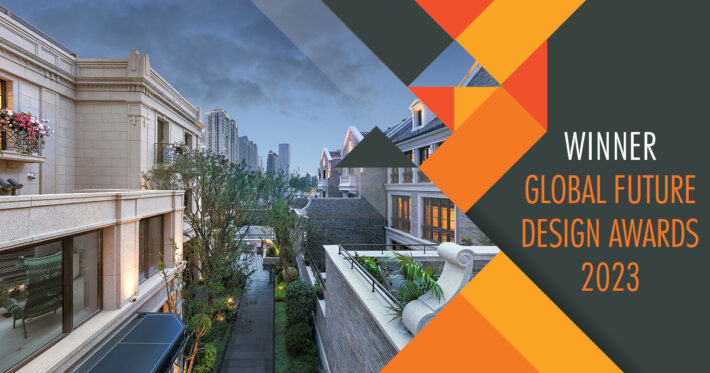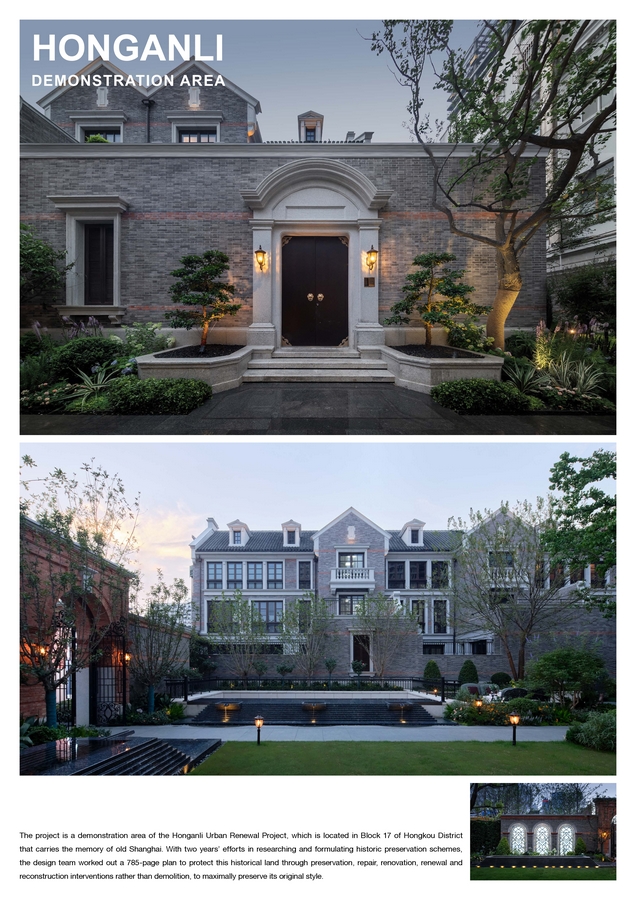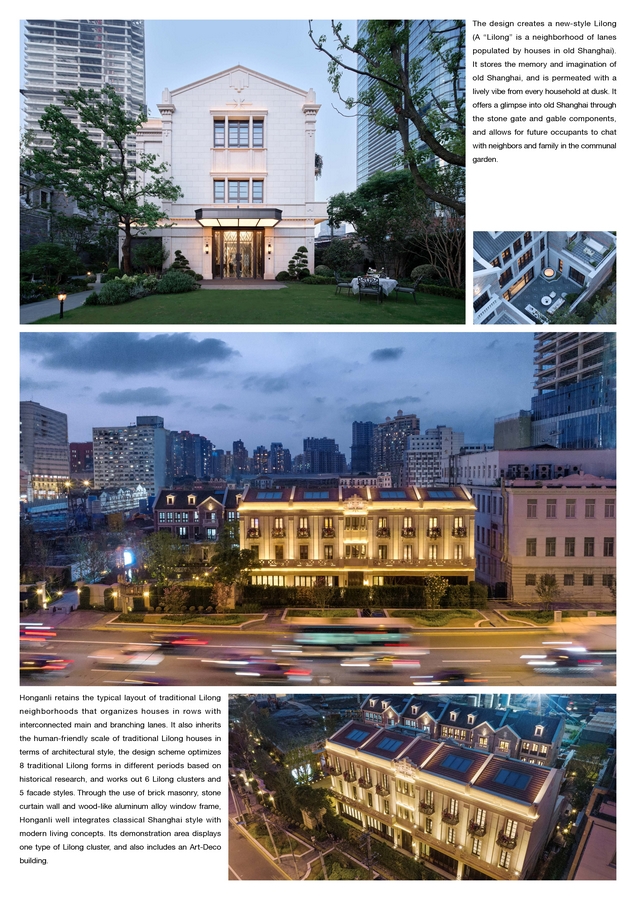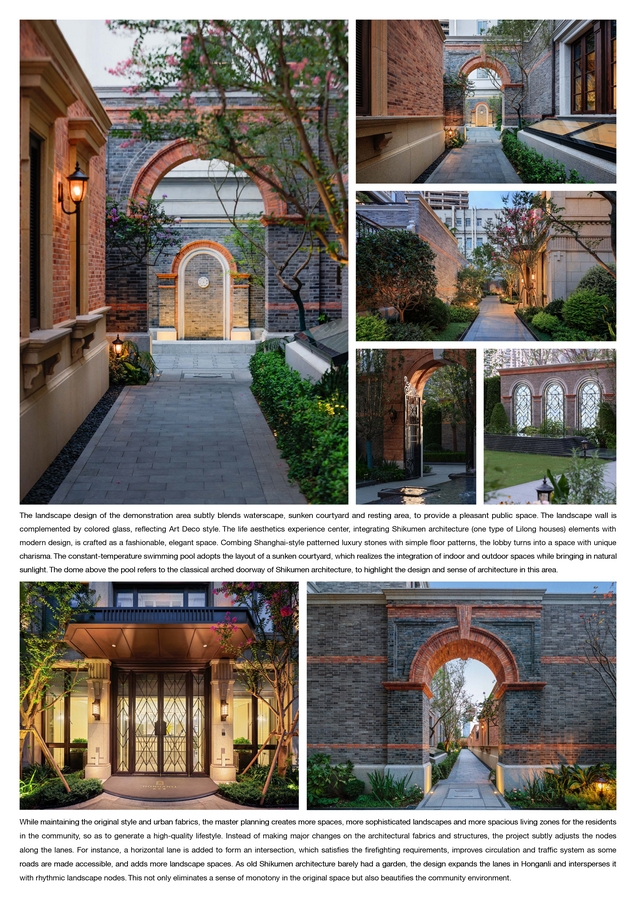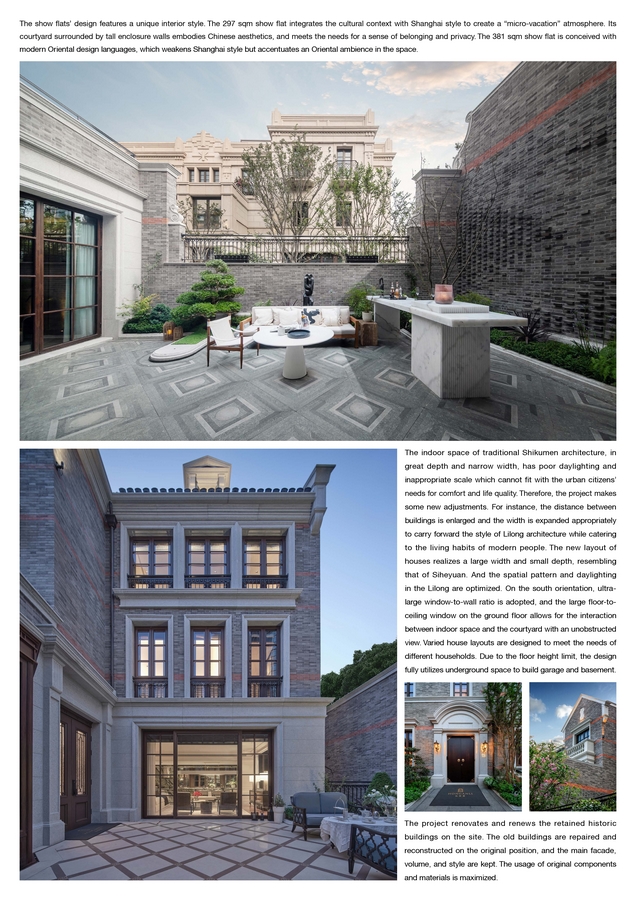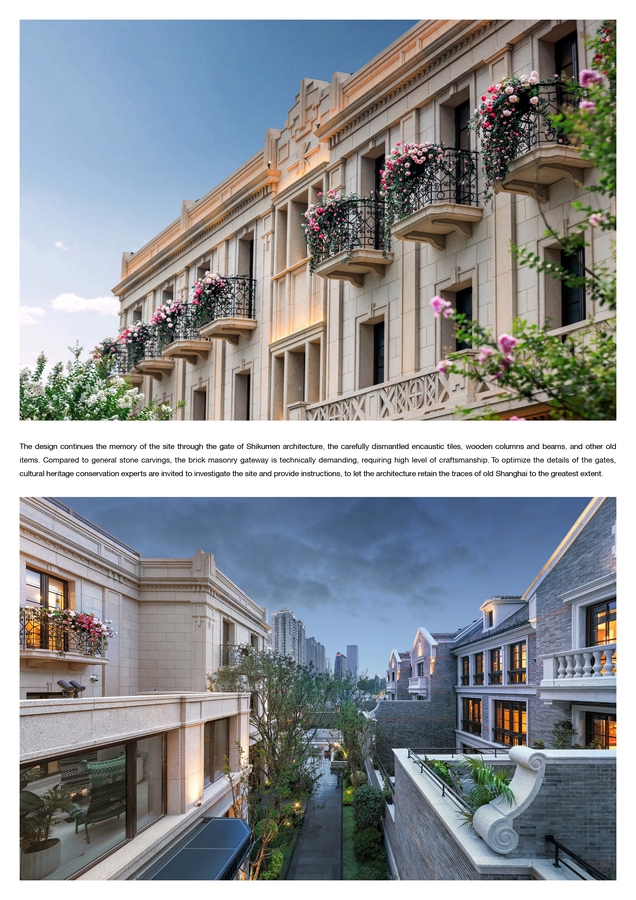The project is a demonstration area of the Honganli Urban Renewal Project, which is located in Block 17 of Hongkou District that carries the memory of old Shanghai. With two years’ efforts in researching and formulating historic preservation schemes, the design team worked out a 785-page plan to protect this historical land through preservation, repair, renovation, renewal and reconstruction interventions rather than demolition, to maximally preserve its original style.
Global Future Design Awards 2024: Entries Open!
Take your work to the next level. Register Now…
Gold 🏆 Winner
Global Future Design Awards 2023
Honganli Demonstration Area
Urban Design (Built)
Firm
GREENTOWN CHINA HOLDINGS LIMITED
Architect/Designer
Lu Hao, Liang Zhuomin
Design Team
Group design control: Ding Ding, Liu Hongwei, Kang Jiang, Ma Rong, Shi Dan, Huang Xi; Regional design leaders: Shi Chunhong, Zhang Haiquan, Tang Yishi, Lian Li; Project architectural design leader: Mu Yue; Project fine decoration design leader : Ding Mengzhou; Project Landscape Design Leader: Chen Qiuhong
Project Location
Shanghai, China
Country
China
Photographer/Copyright
©Shanghai Honganli Enterprise Development Co., Ltd.
Social Media Handles
Facebook: N/A
YouTube: N/A
Instagram: N/A
Twitter: N/A
Website URL
N/A
Honganli retains the typical layout of traditional Lilong neighborhoods that organizes houses in rows with interconnected main and branching lanes. It also inherits the human-friendly scale of traditional Lilong houses in terms of architectural style, the design scheme optimizes 8 traditional Lilong forms in different periods based on historical research, and works out 6 Lilong clusters and 5 facade styles. Through the use of brick masonry, stone curtain wall and wood-like aluminum alloy window frame, Honganli well integrates classical Shanghai style with modern living concepts. Its demonstration area displays one type of Lilong cluster, and also includes an Art-Deco building.
The landscape design of the demonstration area subtly blends waterscape, sunken courtyard and resting area, to provide a pleasant public space. The landscape wall is complemented by colored glass, reflecting Art Deco style. The life aesthetics experience center, integrating Shikumen architecture (one type of Lilong houses) elements with modern design, is crafted as a fashionable, elegant space. Combing Shanghai-style patterned luxury stones with simple floor patterns, the lobby turns into a space with unique charisma. The constant-temperature swimming pool adopts the layout of a sunken courtyard, which realizes the integration of indoor and outdoor spaces while bringing in natural sunlight. The dome above the pool refers to the classical arched doorway of Shikumen architecture, to highlight the design and sense of architecture in this area.
While maintaining the original style and urban fabrics, the master planning creates more spaces, more sophisticated landscapes and more spacious living zones for the residents in the community, so as to generate a high-quality lifestyle. Instead of making major changes on the architectural fabrics and structures, the project subtly adjusts the nodes along the lanes. For instance, a horizontal lane is added to form an intersection, which satisfies the firefighting requirements, improves circulation and traffic system as some roads are made accessible, and adds more landscape spaces. As old Shikumen architecture barely had a garden, the design expands the lanes in Honganli and intersperses it with rhythmic landscape nodes. This not only eliminates a sense of monotony in the original space but also beautifies the community environment.
The design continues the memory of the site through the gate of Shikumen architecture, the carefully dismantled encaustic tiles, wooden columns and beams, and other old items. Compared to general stone carvings, the brick masonry gateway is technically demanding, requiring high level of craftsmanship. To optimize the details of the gates, cultural heritage conservation experts are invited to investigate the site and provide instructions, to let the architecture retain the traces of old Shanghai to the greatest extent.


